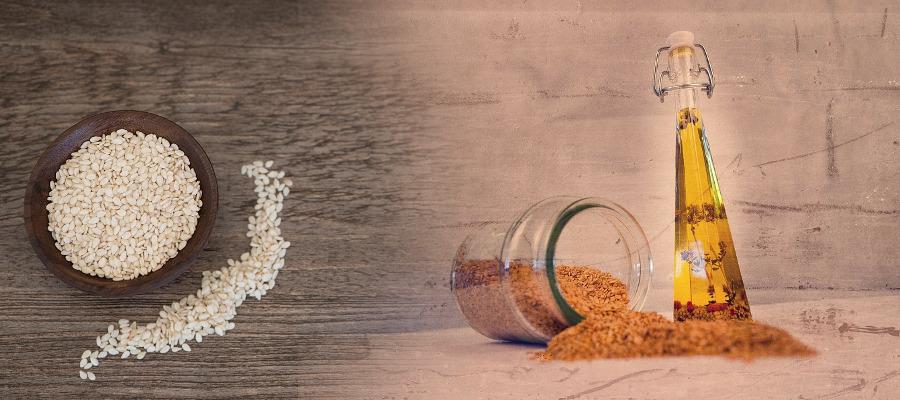Sesame oil - A good choice
Sesame oil is a vegetable oil typical from Asian cultures, which comes from the light and dark seeds of sesame.
During the production of the oil from the dark seeds, these are roasted before extraction, whereupon the oil receives a characteristic aromatic taste. This oil is not to be used for frying, but refines finished, mostly Asian dishes.
The sesame oil from bright seeds that can be used for cooking, on the other hand, is unroasted and neutral in smell and taste. The fatty acid pattern is fairly balanced, making it a healthy supplement to diets.
The history of sesame

Source: Pixabay
Archaeologists found records of the sesame plant on an ancient scroll listing all relevant spices at the time. It is dated to 1500 BC. However, the history of sesame goes back even further. It could be detected in South Asian regions in the strata, which are almost 5000 years old. Also in the ancient Mesopotamian culture, sesame was used and spread from there to India. Some believe that the ancient Greeks and Egyptians used the spice.
2500 B.C. Sesame was especially popular in China, where large quantities of it were used to refine food. At that time there was already the sesame oil, which was not eaten there, but was burned, so that it could serve as the basis for the ink production.
The sesame plant
The sesame plant usually reaches a height of 120 cm. The plants are widely branched or completely unbranched. On the leaves, which are up to 20 cm long and have a maximum width of 10 cm, are small glands and also fine hairs. The flowers are white to pink, but mostly the appearance of sesame is dominated by the color green. The shape of the fruits is oblong and square. They too are covered with fine hairs.
Extraction and production of sesame oil
Sesame oil is contained in the seeds of the sesame plant, which grows one to one and a half meters high and originates from India and Africa. Today it is grown as a crop in many warm, predominantly Asian and African countries. Sesame oil is especially popular in Asian cuisine, where it is used in addition to the use as cooking oil for the production of margarine. In addition, sesame oil is an excellent care product for the skin and is further processed into body and massage oils as well as cosmetics.
The harvest of sesame seeds
The seeds of sesame ripen all year round, so that they can harvest at any time. This is usually done by hand, with the elongated capsules in which the seeds are contained, cut off and dried first. Then you can simply shake the grains out of the capsules. One ton of sesame seeds is sufficient for the production of about 300 liters of oil and even the squeezed seeds are recyclable. They are processed because of their high protein content to high quality animal feed.
The production of the different sesame oil variants
During the production of sesame oil, the seeds are first washed and dried. Then there are different ways to squeeze the oil out of the seeds. Cold pressed sesame oil:
- Cold pressing is particularly gentle, because the valuable ingredients of sesame oil are largely retained. Afterwards, the oil is often filtered to remove larger particles. Also cold pressing the native sesame oils, while the seeds must remain natural, is why this species is available as a light oil.
Warm pressed sesame oil:
- For the refined sesame oils, the seeds are heated simultaneously during pressing. These oils are particularly tasteless, have a light color and don't exprie too fast. In addition, refined oils are almost odorless and are therefore suitable for the preparation of many dishes. Another variant is the unrefined oils, in which the pressing is cold. An additional cushioning ensures that these oils are long-preserveable.


